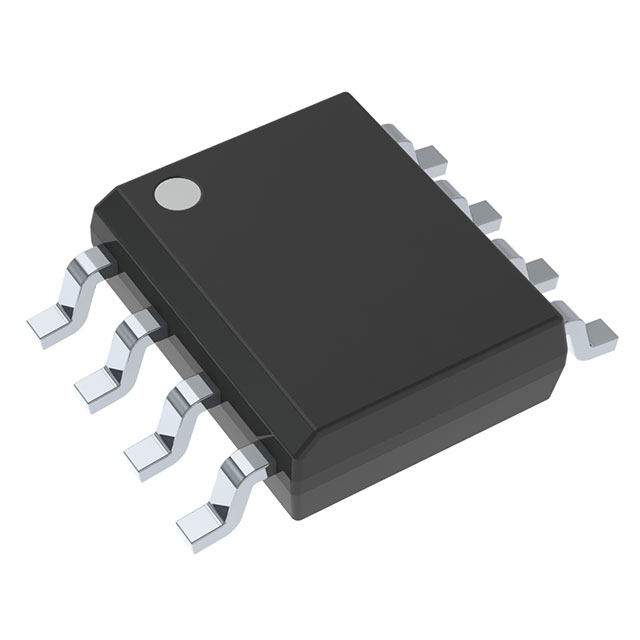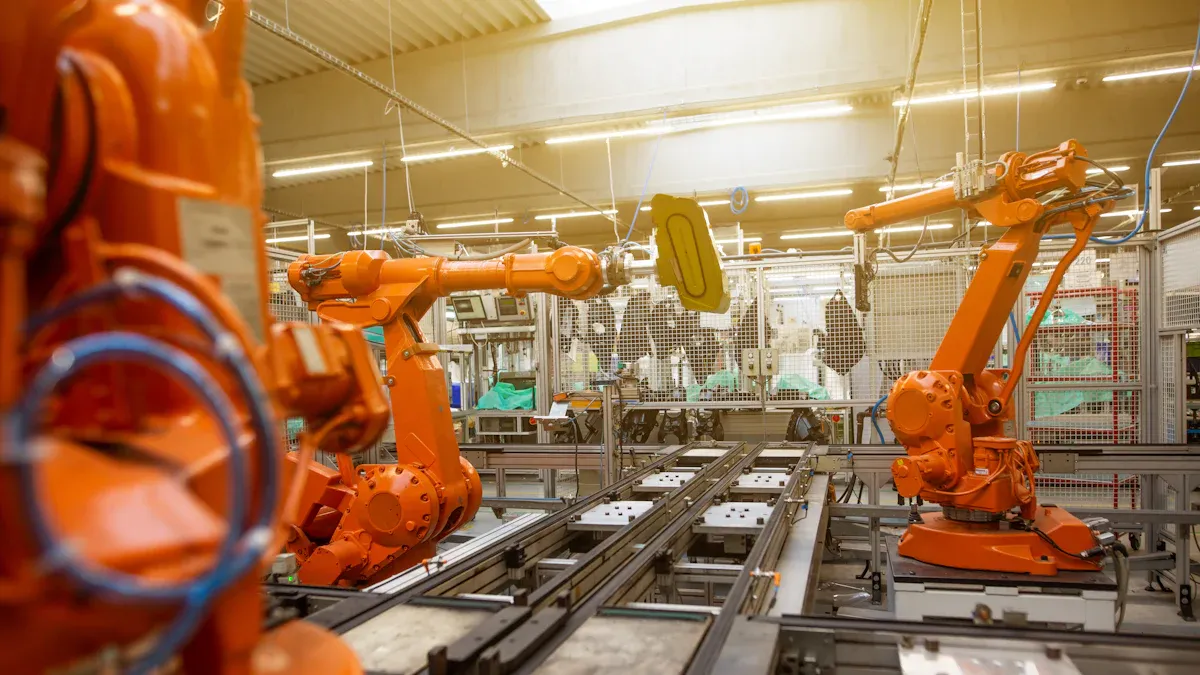Never Overlook SN65HVD3082EDR in Robot Design

Choosing components that are compatible with the SN65HVD3082EDR Supplementary Robot Controller Design ensures your robot operates efficiently. Compatibility issues can lead to wasted time and resources. For instance:
Setup errors account for 10–20% of initial delays.
Software issues contribute to 42% of failures.
Human mistakes result in 70% of robot downtime.
It's crucial to focus on electrical, communication, and mechanical compatibility to prevent these challenges.
Key Takeaways
Make sure the SN65HVD3082EDR works well to prevent mistakes. Check power, communication, and parts fit.
Use RS485 for steady data sharing. It keeps signals clear over long spaces and in loud areas.
Test all parts carefully in tough conditions. This stops problems later and keeps the robot working well for a long time.
Overview of SN65HVD3082EDR Supplementary Robot Controller Design

Key Features and Specifications
The SN65HVD3082EDR is a strong and dependable transceiver for robots. It uses RS485 communication, which works well over long distances. This type of communication also resists electrical noise, keeping signals clear. The device uses little power, making it great for energy-saving robots. It can handle very hot or cold temperatures, so it works in tough conditions. It also sends data quickly, which helps robots respond fast and accurately.
Another important feature is its fail-safe design. This keeps the system working even if something goes wrong. Its small size makes it perfect for robots with limited space. This allows for smaller and more efficient robot designs.
Common Applications in Robot Controllers
The SN65HVD3082EDR is used in many robot projects. One example is controlling motor speed. In a project with a single-phase motor, it adjusted speed using a potentiometer and RS485 Modbus RTU. This shows how it can handle precise motor tasks, which are key for robots that need smooth movement.
This part is also found in industrial robots. It helps sensors, actuators, and controllers talk to each other. Its dependability makes it a top choice for robots in factories, warehouses, and even hospitals.
Tips for Picking the Right Parts
Electrical Compatibility
When choosing parts for your robot, check electrical compatibility. Make sure the voltage and current match the SN65HVD3082EDR controller's needs. Using the wrong parts can cause overheating or damage.
Focus on the power supply. The controller needs steady power within a set voltage range. Unstable power can mess up how the controller and other parts work.
Also, check impedance levels. If they don’t match, signals can bounce back, causing errors. Read datasheets carefully to avoid these problems and keep your robot running smoothly.
Communication Protocols and Standards
Communication rules help robot parts work well together. The SN65HVD3082EDR controller uses RS485, which is reliable and resists noise. Pick parts that support RS485 or can connect to it easily.
Here’s what to think about:
IoT rules decide how devices talk to each other.
Industry standards make sure parts from different brands work together.
Following the same rules lets devices share a network without issues.
By following these tips, your robot’s parts will work together better, with fewer errors or delays.
Environmental and Mechanical Factors
Robots often work in tough places, so pick strong parts. The SN65HVD3082EDR controller handles extreme heat and cold, but other parts should too.
To make sure parts last, look at these tests:
Test Type | What It Checks |
|---|---|
Temperature Testing | Tests if parts survive very hot or cold conditions. |
Humidity Testing | Checks if parts resist water damage like rust or mold. |
Corrosion Testing | Makes sure materials don’t break down from chemicals. |
Vibration Testing | Finds out if shaking causes parts to fail. |
Shock Testing | Tests if parts can handle sudden hits or drops. |
Choose parts that pass these tests to build a reliable robot. This reduces breakdowns and helps your robot last longer.
Common Pitfalls and How to Avoid Them
Skipping Power Supply Checks
Power problems can mess up your robot's performance. If the power supply doesn’t match the SN65HVD3082EDR controller’s needs, the system might fail. Always check that the voltage and current fit the controller’s specs.
Using the wrong power supply can cause overheating or damage parts. To prevent this, read all component datasheets carefully. Use a steady power source to keep voltage stable. Adding capacitors near the controller helps smooth out sudden voltage changes.
Tip: Use a multimeter to check voltage and current during use. This ensures your power supply works correctly.
Ignoring Signal Quality and Noise
Good signals are key for your robot to work well. Noise can mess up signals, causing errors or delays. This is especially true for RS485 communication, which works over long distances but can pick up noise.
To keep signals clear, use twisted-pair cables for RS485. These cables block interference. Keep signal wires away from power wires to avoid noise. Add termination resistors at the ends of the RS485 bus to stop signal bouncing.
Note: Bad signals can cause random problems that are hard to find. Test your robot in noisy places to catch issues early.
Skipping Long-Term Testing
Not testing for long-term use can lead to failures later. Robots often face tough conditions, so parts need to last. Without testing, you risk breakdowns, costly fixes, and poor performance.
Run stress tests to see how parts handle extreme conditions. For example, test the controller under heavy use and at extreme temperatures. Use aging tests to simulate years of use in less time.
Reminder: Write down your test results. This helps you find weak spots and improve your designs.
Recommended Tools and Resources
Simulation and Testing Tools
Using the right tools helps your robot work properly. Simulation and testing tools find and fix problems early. They also ensure parts like the SN65HVD3082EDR fit well together. Here are some useful tools and methods:
End-to-End Testing (E2E): Checks the whole robot system workflow.
Functional Testing: Makes sure each part does its job.
Performance Testing: Tests how steady and fast your robot is under pressure.
Compatibility Testing: Ensures all parts work smoothly together.
For automated testing, tools like Selenium, Cypress, and Robot Framework are great. They quickly test workflows and find errors. Load testing tools check how your robot handles normal tasks. Stress and endurance tools test how it works in tough or long situations. Spike and volume tools show how it reacts to sudden changes or big data loads. Scalability tools make sure your robot can grow with future needs.
Tip: Test your robot in real-life situations to find hidden problems.
Manufacturer Documentation and Support
Manufacturer guides give important details for picking the right parts. They explain power needs, mounting options, and communication rules. The table below shows key areas to focus on:
Requirement Area | Design Considerations |
|---|---|
Power requirements | Check voltage levels and total current for each section. |
Mounting style | Pick through-hole for strength or surface-mount for small designs. |
Form factor | Affects layout and the size of parts. |
Signaling standards in PLDs | Look at standards like LVDS, UART, and SPI. |
Peripherals | Choose extras that work well with programmable logic devices (PLDs). |
Supporting ICs and passives | Fill gaps with the right extra parts. |
Communication | Pick protocols that match your board layout and parts. |
Note: Always check the manufacturer’s datasheets and notes. These help you make smart choices and improve your robot design.
Making sure robot controllers work well together keeps them reliable. The SN65HVD3082EDR has strong features for better communication and strength. Choose this part carefully when building your robot.
Tip: Try simulation tools and read manufacturer guides to improve designs. These tools help prevent mistakes and create better robots. 🚀
FAQ
Why is the SN65HVD3082EDR great for robot controllers?
It uses RS485 communication for clear and reliable data transfer. It saves power and works well in hot or cold places.
How do you check if it works with other parts?
Try simulation tools to test electrical and communication connections. Test in real-life settings to make sure all parts work together smoothly.
Why is RS485 used for robot communication?
RS485 works over long distances and blocks electrical noise. This keeps data accurate, even in noisy or busy environments.
Tip: Always read datasheets and follow manufacturer instructions to avoid problems.
See Also
Reasons Engineers Choose STM32F105RBT6 for Industrial Applications
Guide to Designing Intelligent Sensors with TPS54202DDCR Chip
Implementing TMS320F28034 for Enhanced Automation System Performance

